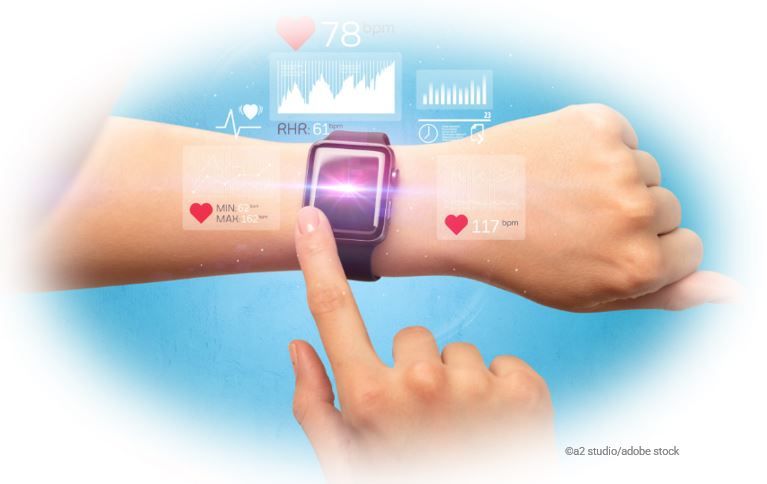Increased Step Count Tied to Better Health for Patients with Heart Failure
New research shows that patients with heart failure who had more steps per day and increasing steps per day experienced better health status over 12 weeks.

Patients with heart failure (HF) who increased their daily step count by 1000 had clinically important improvements in disease-related outcomes, according to a subanalysis of Fitbit data from the CHIEF-HF (Canagliflozin: Impact on Health Status, Quality of Life and Functional Status in Heart Failure) trial.
The findings published recently in JACC: Heart Failure.1
Patient recruitment (N=425; mean age, 63.5 years; 83.3% White) took place from March 26, 2020, to February 12, 2021, at 18 medical centers in the US, with HF confirmed via primary diagnosis or at least 2 medical visits with a diagnostic code for HF. If a patient had a left ventricular ejection fraction above 40%, they had to be on either a loop diuretic or mineralocorticoid receptor antagonist. Additional inclusion criteria were the patient has a Samsung S7 Galaxy or Apple iPhone 6 or later version, can speak and read English, and had to wear a Fitbit—recording daily steps and floors climbed—for the entire study. HF with preserved ejection fraction was the dominant disease type in 59.1%.
“Given the increasing availability of wearable technology to monitor physical activity, there is a pressing need to understand the clinical significance of changes in activity,” said Jessica Golbus, MD, MS, first author of the study, Division of Cardiovascular Diseases and the Department of Internal Medicine, University of Michigan at Ann Arbor, in a statement.2
Health status was evaluated using the Kansas City Cardiomyopathy Questionnaire (KCCQ) at 5 points: baseline/screening and 2, 4, 6, and 12 weeks. Scores of 25 points or fewer indicated poor health status and 75 to 100 points, good to excellent.
At the 2-week mark, the mean KCCQ Total Symptom (KCCQ-TS) and Physical Limitation (KCCQ-PL) scores were 62.7 (21.0) and 55.7 (21.6), respectively. By the 12-week mark, the corresponding scores had increased to 65.4 (22.2) and 60.2 (23.2). Mean step count as measured by the Fitbit, however, dropped from 4311.1 (2979.2) at baseline to 4293.8 (2865.5) by 12 weeks, while total floors climbed rose slightly, from 2.7 (3.9) to 2.9 (5.5).
An additional analysis that looked at associations between increased step count and KCCQ scores by score range (0-25, 25 to <50, 50 to <75, 75-100) at 2 weeks found positive correlations between higher step count and higher scores on the KCCQ-TS (P<.001) and KCCQ-PL (P<.001):
- KCCQ-TS scores and step counts:
- 0-25: 2437.6 (1419.5)
- 25 to <50: 4004.3 (2666.8)
- 50 to <75: 4259.5 (3012.6)
- 75-100: 4870.9 (3171.3)
- KCCQ-PL scores and step counts:
- 0-25: 2301.5 (1647.9)
- 25 to <50: 3522.0 (2523.6)
- 50 to <75: 4693.6 (2598.9)
- 75-100: 5351.3 (3757.2)
Meanwhile, the results for floors climbed fluctuated over the same period, although the study authors deemed these results not statistically significant:
- KCCQ-TS scores and floors climbed (P=.137):
- 0-25: 1.5 (1.8)
- 25 to <50: 3.0 (5.9)
- 50 to <75: 2.6 (3.5)
- 75-100: 4870.9 2.9 (2.8)
- KCCQ-PL scores and floors climbed (P=.218):
- 0-25: 2.8 (8.5)
- 25 to <50: 2.0 (2.7)
- 50 to <75: 2.8 (2.9)
- 75-100: 3.4 (3.8)
Additional data demonstrate the following: Participants who walked 1000 steps/d had a 3.11-points (95% CI –1.05 to –5.17; P=.003) lower KCCQ-TS score vs those who walked 2000 steps/d, and those who walked 3000 steps/day had a 2.89-points (95% CI 1.04-4.73; P<.001) higher KCCQ-TS score. These points trends continued with the KCCQ-PL scores: Participants who walked 1000 steps/d averaged a score that was 5.36 points (95% CI –7.39 to –3.33; P<.001) lower vs those who walked 2000 steps/d, and those who walked 3000 steps/day had a score that was 4.97 points higher (95% CI 3.15-6.79; P<.001).
HF type—preserved or reduced ejection fraction—did not influence their findings, the study authors noted. Further, from baseline through 12 weeks, an adjusted nonlinear model demonstrated a significant association between daily step count and change in KCCQ-TS (P=.004) and KCCQ-PL (P=.003) scores.
“The importance of recognizing that there is an association with increasing activity and better health status (without better symptoms and less physical limitations caused by HF, they would not be able to increase their activity),” the authors concluded, “but not with decreasing activity and lower health status, is one of the major findings of this study and supports further research to validate these findings.”
Future studies should focus on how changes in wearable device data are interpreted in clinical and research contexts for chronic diseases beyond the HF space and long-term follow-up on potential clinically significant changes in activity and health status measured using wearable technology.
This article first appeared on Patient Care partner site American Journal of Managed Care.
References:
1. Golbus JR, Gosch K, Birmingham MC, et al. Association between wearable device measured activity and patient-reported outcomes for heart failure. JACC Heart Fail. 2023;S2213-1779(23)00334-7. doi:10.1016/j.jchf.2023.05.033
2. People with heart failure can step their way to better health. Press release. American College of Cardiology. July 26, 2023. Accessed September 5, 2023. https://www.acc.org/About-ACC/Press-Releases/2023/07/26/17/57/People-With-Heart-Failure-Can-Step-Their-Way-to-Better-Health